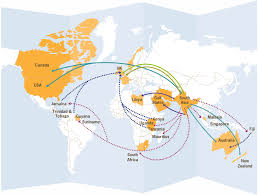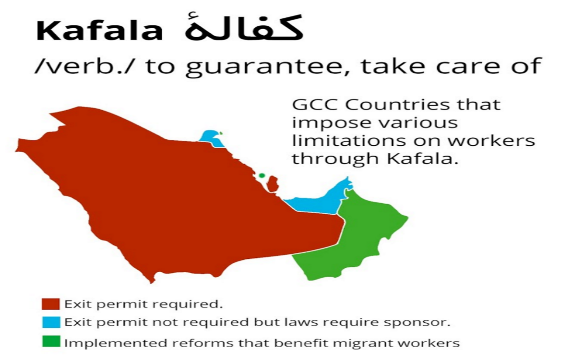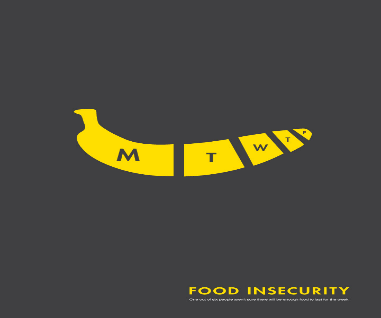This past week, our International Development class was honoured to have Mohammad Moniruzzaman give a lecture. Mohammad Moniruzzaman is a PhD student in a joint Geography and Environmental Studies at the University of Waterloo and Wilfrid Laurier University. He is currently looking at the social impact of remittances in Bangladesh. The lecture gave us an inside look into the impacts of remittances and migration in a few villages in Bangladesh. Migration is the movement of humans from one place to another and in the case study looked at in the lecture, it has affected how people work and their livelihoods. People migrate to send remittances, gifts of money, back to their families in their home. Mohammad Moniruzzaman looked at the reasons how this will affect a country and individuals.

Many individuals all around the world are migrating from place to place due to a variety of beneficial and detrimental reasons. Migration can occur within a country as well as outside of a person’s country of origin. In 2015, it was recorded that 244 million people lived outside of their home country. In today’s guest lecture we focused on migration through Remittances. Remittances can be described by the internal and external migration of individuals with the purpose of working and earning money to send back to their families. Dr. Mohammad Moniruzzaman’s presentation focused on remittances and connected this topic with two issues; food security and debt. He also focused on the positive and negative impacts that remittances encounter.

Migration has become more prevalent around the world.
Receiving remittances has obvious benefits towards the food security of a household. Households who received remittances were more likely to have lower HFIAS (Household Food Insecurity Access Scale) scores compared to those that did not receive remittances. In addition to this, there was also a positive correlation seen between receiving remittance and having a higher HDDS (Household Dietary Diversity Score) meaning that they consumed more food groups. With this being said, remittances can also contribute negatively to food security: with strict kafala laws, a system that requires all unskilled labourers to have a sponsor in their home country responsible for their visa and legal status, usually employers. This limits where individuals work and in reality, many families – particularly those in Bangladesh – go into extreme debt to repay the cost of moving abroad. Hence the money that is sent back goes directly into debt repayment instead of household needs, further increasing food insecurity.


Through the presentation and external resources, we have been able to see exactly how migration contributes to the development of people and countries. This is a crucial part of understanding international development. People migrate in hope of finding better economic opportunities to achieve a higher standard of living. The case study conducted in Bangladesh by Mohammad Moniruzzaman has broadened our views on the effects of migration –specifically remittances- towards poverty reduction and food security. It is topics like these that provide inspiration to fellow International Development students to make a change in the world.
Written by: Abigail Langlois, Crystal Gomes, Jade Martin, Mabel Truong, Maria Celeste Herrera, Miranda Podolinsky, Reilly Murdock
References: Written
Food Security. (n.d.). Retrieved March 14, 2016, from http://www.who.int/trade/glossary/story028/en/
Migration | UNFPA - United Nations Population Fund. (n.d.). Retrieved March 14, 2016, from http://www.unfpa.org/migration
Motaparthy, P. (2015, March 11). Understanding Kafala: An Archaic Law At Cross Purposes With Modern Development. Retrieved March 14, 2016, from https://www.migrant-rights.org/2015/03/understanding-kafala-an-archaic-law-at-cross-purposes-with-modern-development/
Roshanafshar, S., & Hawkins, E. (2015, March 25). Health at a Glance. Retrieved March 14, 2016, from https://www150.statcan.gc.ca/n1/pub/82-624-x/2015001/article/14138-eng.htm
References: Images
Devi, Y. (2011, July 1). Unix-to-Linux Migration Has Come of Age [Digital image]. Retrieved March 14, 2016, from http://opensourceforu.efytimes.com/2011/07/unix-to-linux-migration-come-of-age/
Food Insecurity Poster [Digital image]. (n.d.). Retrieved March 14, 2016, from http://candychang.com/main/food-insecurity-poster
Kafala System in Saudi Arabia [Digital image]. (n.d.). Retrieved March 14, 2016, from https://lifeinsaudiarabia.net/kafeel-system-in-saudi-arabia_13/
Map of Major South Asian Migration Flows [An analysis of south asian migrants]. (n.d.). Retrieved March 14, 2016, from https://www.striking-women.org/page/map-major-south-asian-migration-flows
Speed Remit [Money Transfer]. (2014). Retrieved March 14, 2016, from http://www.merajdin.com.pk/
USAID Logo [Digital image]. (n.d.). Retrieved March 14, 2016, from http://www.avsi.org/international-organizations/usaid/